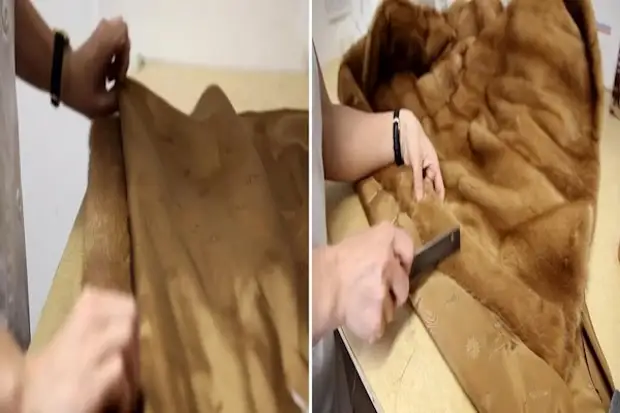
It is not so easy to part with an old fur coat, especially if she is beautiful and expensive. Such things usually rocked for a very long time, but still at one fine moment, the Tagason comes out of fashion, scuffs appear on the sleeves, and on the seams they are gallows. How to be if the once-elegant fur thing has lost sight, and in the nearest furry workshop can not offer anything acceptable? Output one is to master the speed craft. How to cross the fur coat with your own hands? Models can come up with very interesting. Now we will discuss them.
Getting ready for work
Regardless of what you do from the old fur coat, you will need some things, and better prepare them in advance. Before you alter the fur coat from the Muton with your own hands, as well as from any other fur, prepare:
- The pattern of what you will sew;
- Rapping knife (with a sliding blade);
- tweezers;
- High-quality cotton threads №40 or №45;
- Needles for leather.
As for the materials, some of them with the guarantee will be the same fur coat to be removed. But one fur is not enough. You need:
- viscose fabric for lining;
- If the designer idea is required - skin pieces;
- Fittings (buttons, buttons, etc.).
Where to take a pattern?
It is best to make basic patterns. They are sewing fur coats and dresses. The base pattern can be modeled, namely it is necessary for you now. Where to take it? You can do differently:
- order in the studio;
- find something suitable in magazines or on the Internet;
- Build yourself;
- Sprinkle and circle the details of the old, but suitable for the size of the product (better than a bathrobe).
You need basic patterns:
- shelves;
- backs;
- Sleeves.
The simplest options are to find in the magazine or circle details of old clothes. In order to competently build a pattern, you need a special benefit. Most often, these are professional editions or old books on needlework - there are many people on the Internet.
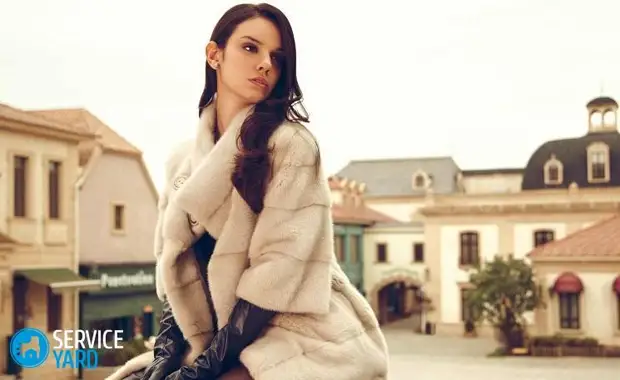
Remove mercies
Regardless how you decide to get a pattern, you need to know your measurements. Without them, you just do not pick up and do not approve. In order to sew something else from the loose view, you need to know:- chest girth;
- waist girth;
- hip girth;
- neck girth;
- the length of the product;
- sleeve length;
- The length of the seam from the armpit to the waist;
- width shoulders;
- shoulder length.
Important! When building a pattern, horizontal measurements are divided into 2.
Fur preparation
Before you alter the fur coat with your own hands, you need to see, with what material you have to deal. Rate how good your fur is:
- Find out what pieces can be used, and what - it is better to delete.
- To determine the strength of suspicious places, moisten them with warm water and leave alone for half an hour, and then try carefully stretch to the ecze. If it does not start rushing and all the fur will remain in their places, the fur can be safely used.
- Select a style.
- Calculate how many furs you need, what other materials can be added.
- Remove the fur coat.
Swing up a fur coat
The first thing should be a fracture lining. No special devices for this do not need - a fairly simple portno unpacking.Important! It is not very desirable to use the blade, you can damage to a member.
Spread the details of the fur coats, and they are details of the pattern. Look, whether the fur is enough or have to combine.
How to cut?
Pondering the options, how to redo the fur coat, take into account the few features of this material. Such knowledge will be useful when working with Muton, and with nutrays, and with a mink. New details lie on member, and not on fur. This is done like this:
- Put a piece of fur with a meter up.
- Enter the detail of the pattern.
- Squalize the details - in this case, no portno pins are suitable, but the most common stationery buttons.
- Cut the item with a sharp speed knife, barely touching not to cut a pile.
Important! Never press the fur to the table.
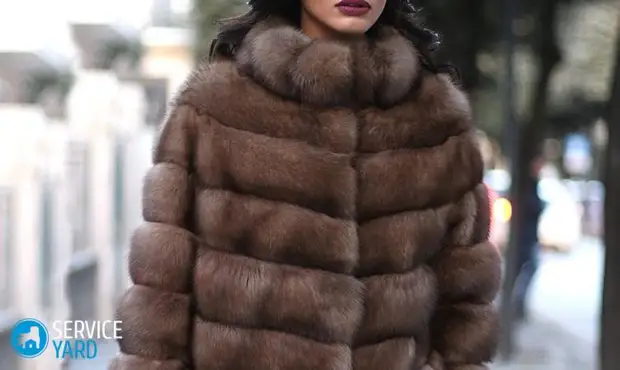
How to sew?
Alteration of old fur coats in fashionable with their own hands - the occupation is quite monotonous and requiring fairness. Prepare to the fact that it is necessary to sew manually. Seams are used to work with fur:- "Kozlik":
- Right (through the edge).
Important! Why is the manual seam better than the machine? Everything is very simple. The pile will have to constantly refill so that it does not remain on the wrong side. At the same time, the seam should be on the skin, and not on the pile - the fur hides your work. Thread should be delayed very carefully. Stitches should not be too tight, nor too loose. In the first case, you risk tearing to a meager, in the second - seam will not hold on.
Seams that have a large load, it is necessary to strengthen. For this serves Dublerin. Special adhesive gaskets for skin and fur can be applied, they are also sometimes sold in sewing and speed stores. The seams will have to thoroughly align. For this we need:
- foam sponge;
- oppression.
Seam is wetted with a sponge, after which something heavy is put on it (for example, iron, only not necessary to turn it on). It is necessary to wait for a complete drying, and only then go to the next stage. After the seam is dry, fur must be combeding along the seam - first against the pile, then in the direction of the growth of the fur.
Threads and needles
If you want to alter a fur coat with your own hands - the master class begins with the choice of threads. For such work, cotton medium thicknesses always apply. Synthetics simply cuts member.
Needles better buy special, for fur. But if any sudden will not be in the sewing store - it is possible to purchase and ordinary, which correspond to threads No. 40 or No. 45.
Talk about models
You can enter the old fur coat in different ways. You can not change anything at all, but simply shorten the hem or sleeves, as well as sunmove. These are the simplest options, so that we start.Crouching bodies
This method is suitable for a product from any fur, but there is one condition - the coat must necessarily be cut off. She may be:
- on the coquetka;
- Cutting along the waist;
- With a low waist, that is, cutting along the hips.
Important! This method is recommended if the horizontal seams do not match the corresponding lines of your body.
In this way, you can significantly change the style.
- Write the seam to which the upper part is pulled to the bottom.
- Set aside the desired length of the lateral seam of the bond or skirt.
- Smetae details.
- Encode what happened.
- Sweep the top and bottom of the "goat" or a speed seam.
Important! From remnants of fur, you can make decorations or sew a coupling.
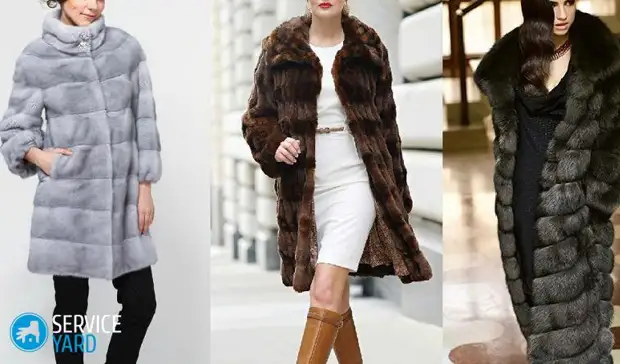
We repair the welcome
This piece of fur products is most often abrase. The weld runs about clothes, as a result, it turns out their stations. Details are best replaced, and at the same time to put new fittings, because the buttons and the hooks also wear out over time.Important! New welds can be made of artificial fur, skin and even dense fabric, but the first two options are better.
Crouching sleeves
The lower parts of the sleeves are also "bald" quite often. You can cope with the problem in two ways:
- Crop and sunmay if the sleeves are long;
- Sew new cuffs.
Sewing better than other material. Fully break the sleeve no need - enough to reveal the edge of the lining and insulation (if it is), the fusion and part of the seam adjacent to the cuff.
Bald places if they are at the bottom, it is best to cut:
- Measure the width of the sleeve (together with the allowances).
- Pour a strip of 3-5 cm wide from leather, artificial fur or dense tissue - its length is equal to the width of the sleeve.
- Align a long slope of the lower sleeves, the front side of each other.
- Sustch seam.
- Bend the strip on the wrong side, and the pork falling into the seams pull the needle on the front side.
- Stripes. Bear on the wrong side of 0.5 cm and the sew "goats", reflecting the edge of the lining and insulation under it.
We like a fur coat
Want to shorten the old fur coat? Make it easy. It will have to break a little - only the bending. By the way, do not forget to carefully see how it is completed - it will greatly facilitate your task:- Excult the lower bending (side seams can not unpack).
- Set aside on the side seams, as far as you need to shorten the fur coat, do not forget about the width of the poda.
- Shorten lining and insulation on the same value.
- The place that you will be sided, moisten with a sponge from the side of the Mebra, fit and put under the press.
- To put the edge of the lining in the bending.
- Side the fur coat with a seam "Kozlik".
- Take the hairs on the front side so that they lay naturally.
We transform a fur coat
If there is a lot of damaged places and simple ways to update the product, it will have to resort and sew something new. There are places that abrase most intensively:
- collar;
- bottom sleeves;
- shoulder seams;
- Long fur coats - the edge of the hem.
Damaged areas you, of course, do not need. First of all, you need to remove them, and then the breakup is what remains.
Fur vest
The easiest way to redo the old fur coat, which has a lot of sleeves and collar, to sew a vest from it. For this suitable any fur. You will need:
- lining fabric;
- Two buttons.
If there is a pattern - very good, but in this case nothing is worth do without it.
Important! Marking can be made directly on member (draw a better ballpoint pen). It is necessary to use whole parts as possible - the shelves for the front, the back - for the rear.
How to alter a fur coat with your own hands, having a vehicle pattern on my hands:
- Take the leaf on the appropriate detail of the fur coat and stick.
- Circuit contour.
- Make the allowance and circle again.
- Cut out a sharp knife (you can use scissors with short ends, but it will be long and uncomfortable).
- Sweat the details on the shoulder and side seams.
- Synod, if necessary, apply, and then the fixed pattern cut the lining.
- Note the fastener and the tie the buttons.
- Lining bundles start on the wrong side.
- Sew lining (it is better to do this manually).
Important! The faces and cutout of the neck can be sewed skin strips.
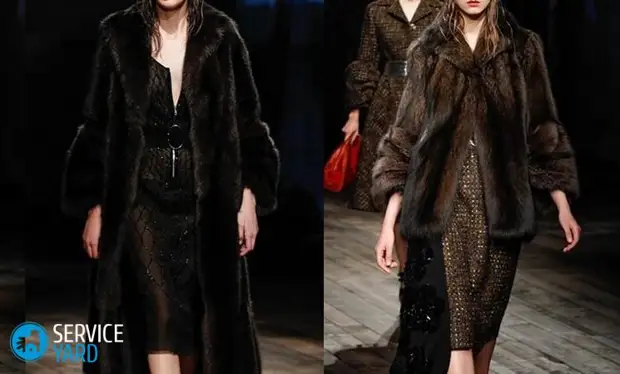
Bolero
This is a short vest, it can be sewed from a strongly worn fur coat. Since the shelf and the back have a small length, it is possible to cut them out of any entire parts. The main thing is to ensure that there were the same direction of the pile on different fragments. Everything else is done in the same way as when sewing ordinary vest.Combined Shub
If there are a lot of fur, but the whole fur coat does not work out of it, you can make a combined one. In this way, you can alter a fur coat from nutria with your own hands, and from other types of fur too.
Two ways are possible:
- with leather ribbons;
- With leather inserts on the waist or sleeves, as well as with leather overhead items.
In the first case, the same horizontal leather and fur stripes are cut. They are better to do on the pattern. Strips are stitched together, and then all the product is going. In the second method, details or fragments are made of leather.
Mouton and its capabilities
Muton, he is Tsigaik, is considered to be fur almost eternal. So it is possible that somewhere in the grandmother's cabinet still lies a fur coat, bought half a century ago and long ago released from fashion. It's time to make something interesting out of it. At your disposal will be a tight and heavy fur, which is best used in direct appointment, that is, to make a new fur coat, seemingly modified by one of the ways offered.For the manufacture of decorations, this fur does not fit. But from it you can sew:
- shit;
- jackets;
- vests;
- blankets;
- Carpets.
Procedure for the manufacture of plaid or carpet is quite ordinary:
- Remove the fur coat, not a touching side seams.
- Remove the bald sections.
- Collect a new cloth, picking up parts by contours - you can even make a template.
- The missing details cut out of another fur or skin.
- Edges Treat oblique baking.
How to cross the mink coat with your own hands?
With expensive fur part especially hurt. The mink coat can be updated by saving the maximum number of parts. If the fur is a lot, nothing prevents to make a short fur coat or mix-mix with inserts. But there are other options.
From such fur can be sewn:
- skirt, adding her leather jacket with inserts from the same mink;
- Hood with a baking or short medieval cloak;
- plaid;
- footwear;
- mittens, cap and even scarf;
- jewelry;
- Bag.
Important! Mink is perfectly painted, so it may not have to change anything - the yellowed fur can be painted in another color, and the fur coat will look like a new one.
Nutria
Nutria has a long and pretty hard fur. It is warm and durable, and also has water-repellent properties. Oddly enough, such a fur coat can not only be altered, but even to tie. For this purpose, it is necessary to break straighten and dissolve on the bandwidth 2-3 cm. Do it should be very neat, trying not to trim the pile. All this is wounded in the ball, a woolen, cotton or acrylic thread is added, and then knives with a thick crochet.
You can associate:
- manot;
- stole;
- plaid;
- cloak;
- Vest or jacket.
In short, the options for creating new clothes or household items are quite a lot. But what should not be done in any way - it is to keep spoiled fur products in the apartment. They not only clutter the cabinet. Such things are very attractive for moth, so, without sobering in time with the old fur coat, you risk parting with new fur or woolen things.
a source
